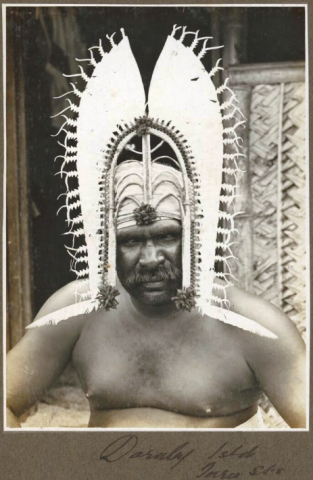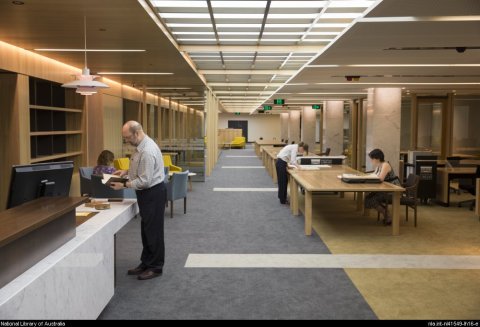SELECTED VIEWS FROM OUR COLLECTION
Description
The Thursday Island group comprising Thursday Island (TI), Horn Island, Prince of Wales and Hammond Islands is uniquely diverse and multicultural compared to the other Island Clusters because of the colonial and historic influences of the pearling Industry and the different cultures and people who have settled on these islands. The Thursday Islands Cluster has distinct cultural characteristics which define them as a region and people. The islands were an important strategic air base in World War 2 with Horn Island being home to over 5000 troops. Today, with a population of 539, it is the air hub for the outer islands and the Cape. Prince of Wales Island is the largest of the group while TI (only 3km²) is the administrative capital, 30 km off the tip of mainland Australia. Although it lacks its own freshwater supply, the island was selected for its deep harbour, sheltered port and proximity to major shipping channels. One of 17 inhabited islands in the straits, TI was once a major pearling centre, resulting in today's cultural mix of Southeast Asians, Europeans and Islanders. Hammond Island became the pearling station headquarters for a short time until its relocation to Thursday Island and early in the 20th century gold was also mined. A cattle industry was set up later to supply the population of Thursday Island. In 1929 the need was seen to establish a Catholic Mission on Hammond Island for the children of the Filipinos and Malays whose forefathers were brought to the Torres Straits as indentured labour.
The Aboriginal Kaurareg people belong to the Thursday Island Group and were forcibly removed to the village of Poid on Moa (Banks Island) in 1921 and 1922.
These distinct cultural and geographical characteristics define the Thursday Island group as a region and people. The material listed in this section of the guide includes unpublished material such as letters, photographs, paintings and diaries referring to the Islands and people. Please note that the individuals who were interviewed or photographed may not have been in the Thursday Island group when recorded.
Each Island has been categorized with related material which can be viewed in more detail by clicking on the related link to the Library's catalogue record. If a photo is included a link will also be provided to it's catalogue record.
Waibene - Thursday Island
Manuscripts
- Notes, 1918-1928 (copies of the Torres Straits Daily Pilot from the Sir John Ferguson Collection) - NLA MS 3373
This material contains a variety of newspaper clippings from 'The Daily Pilot' which provide an insight into the Torres Strait economy and lifestyle during the introduction of religion.
- Articles and letters relating to the English Carpentaria Association, 1867-1957 - NLA MS 5952
This manuscript hold Church of England documents that highlight the integrity of Islander women at various mission througout the Torres Strait while their Husbands are out at Sea on Pearling boats. This manuscript also documents limited language and accounts of Islanders depiction of before and after the Coming of Light (Gospel).
- Records of the Torres Strait Regatta Committee, 1893-1895 - MS Acc12.142
This manuscript hold the records of the regatta on Thursday Island in 1895 including conditions and regulations for the race. It also includes letters, notes and journal of 1893 meeting minutes by committee.
Pictures
- Thursday Island, Queensland [picture] / [T.G. Glover] 1879
1 watercolour ; 11.4 x 36 cm. Depicting Thursday Island 1879
- Thursday Island Postcard Collection (1917-1920)
This postcard collection showcases Thursday Island in the early 20th century and provides an insight into what life was like for those who lived on the Island. The collection illustrates aspects of Thursday Island that are non existent because of development and a view of the colonial history on the island. The following are two images from forty in this collection:
[Five views of Thursday Island, including] Thursday Island from Military Hill, Victoria Parade, Sumai, native village, Quetta Memorial Cathedral, [ca. 1917-1920]
Unveiling of Dr. Wassell's monument [in front of the Victoria Institute building], Horn? Island, [Torres Straits], 1917
- View of Thursday Island 1899
A panorama photo of Thursday Island which allows us to see what the 'Town of Thursday Island" looked like in 1899. This image is not yet available online.
- Australian Information Service collection
Formerly the Australian News and Information Bureau, the Australian Information Service collection comprises over 2600 images including the following:National Bank building at Port Kennedy, Thursday Island, 1956
- Australian Inland Mission collection
Assembled by the Rev. Fred McKay, the collection covers all aspects of the AIM and its work since its inception, particularly at the missions in Dunbar, Birdsville, Innamincka, Broome, Carnarvon, Oodnadatta, Darwin, Alice Springs, Tennant Creek, Beltana, Victoria River Downs and Port Hedland. Subjects include portraits of Aboriginal people, mission conditions, ministers of the Mission and their families, the doctors and nurses of the Aerial Medical Service. A large component were taken by Rev. John Flynn. The following image is part of this collection:
Customs House, Thursday Island, Queensland
- Album of views of the Torres Strait Islands, Queensland, 1928-1929 / Charles Maurice Yonge
This album contain 114 photographs and is part of the Great Barrier Reef Expedition, 1928-1929 photographic collection. The images capture aspects of everyday life for Islanders and include people who are yet to be identified. The following view is from this album:
View over Thursday Island with Prince of Wales Island in the background, Queensland, ca. 1928
- Douglas family photograph collection 1880-1940
A collection of photographs of the family and descendants of John Douglas, Queensland politician and grazier. Includes portraits of the family as well as photographs of St John's College, Sydney University; St Ignatius' College, Riverview.
The following is one of seven scenes taken at the time of the funeral of John Douglas on Thursday Island in 1904.
Soldiers at the funeral of John Douglas, Queensland politician and grazier, Thursday Island, Queensland, 1904
- Hurley collection of family, industrial, pastoral and scenic images, 1910-1950
This collection includes the following two photographs:
Pearl diver collecting shells from the beds of Torres Strait, Queensland
Uniformed Thursday Island native women process prawns, Thursday Island
These unidentified women were working in the Thursday Island Prawn Factory on TI between 1948 and 1971. If you can help us identify them please let us know by using our Ask a Librarian Service.
Oral History
- Betty Foster and Mary Bowie interviewed by Karl Neuenfeldt and Lyn Costigan in the Torres Strait hula dancing oral history project
Betty Foster and Mary Bowie talk about their Hula Dancing experience and how Hula was a part of their lifestyle. Great praise was also given to Florence Savage for her teaching and natural dancing abilities. Foster and Bowie also share the culture of Hula dancing in the Torres Strait is uniquely apart of the region unlike the Pacific.
Keriri - Hammond Island
Pictures
- Four Men in traditional dress and holding ceremonial objects , Hammond Island , Queensland, approximately 1905
Men on Kiriri Island (Hammond Island) hold a dance mask and ceremonial objects. The man on the right is wearing a headdress of the type known as a dari. This image is not identified but is most probably of the Kaurareg people before they were forcibly removed to the village of Poid on Moa (Banks Island) in 1921 and 1922.
Muralag - Prince of Wales
Pictures
- Native canoe, which came alongside from Prince of Wales Island, Aug. 27th, 1855
Early depiction of Kaurareg People in canoe near Prince of Wales Island. This images is possibly one of the earliest depictions of Kaurareg people. This image provides a visual understanding of canoe shape and operation by Kaurareg islanders.

[Man wearing head dress], Darnley Island [Erub], Torres Straits [picture] / Frank Hurley 1921
SPECIAL COLLECTIONS READING ROOM

Special collection materials can be accessed through our Special Collections Reading Room located on the first floor of the National Library
![View of the town and the pearling fleet in the harbour, with Prince of Wales Island on the left and Friday Island on the right], Thursday Island, [ca. 1917-1920]](https://www.nla.gov.au/sites/default/files/blogs/nla.obj-148874722-1_0.jpg)
![Native canoe, which came alongside from Prince of Wales Island, N[orth] Australia, Aug. 27th, 1855; Tom Tough and Monarch, Possession Island, Aug. 27th 1855](https://www.nla.gov.au/sites/default/files/blogs/nla.obj-134418063-1_0.jpg)